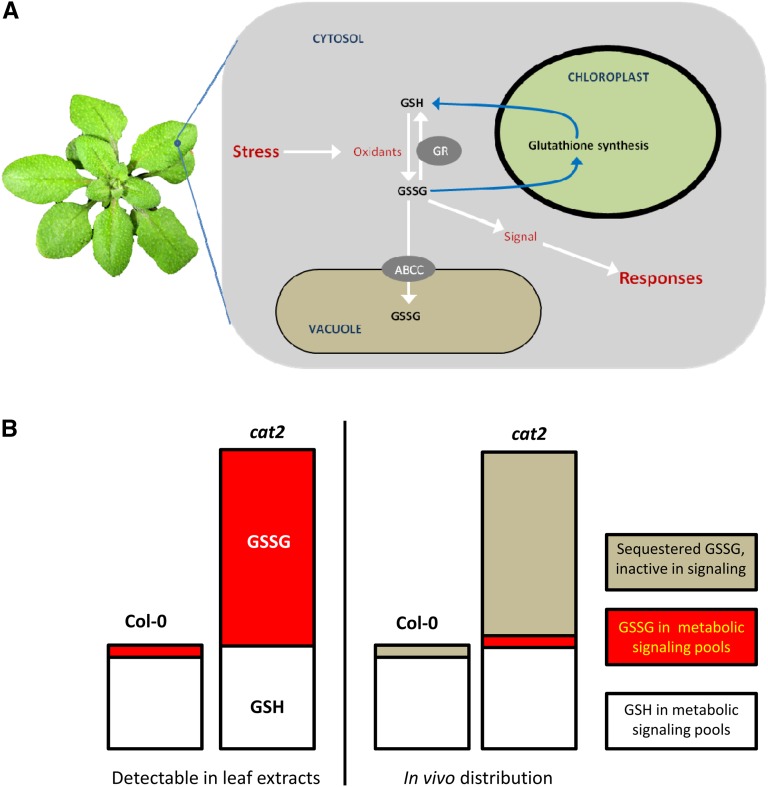Figure 3.
The role of vacuolar sequestration in regulating the redox gatekeeper (glutathione redox potential). A, Increased availability of reactive oxygen species is a general feature of plants exposed to stress. Reactive oxygen species promote the oxidation of glutathione (GSH) to glutathione disulfide (GSSG), and this is followed by the activation of GSH synthesis, possibly driven by a change in the GSH-GSSG ratio. At least part of the GSSG that accumulates in oxidatively stressed plants is shipped to the vacuole, a response that could be important in regulating appropriate signaling to stress. For simplicity, GSSG is shown as a signal, but the sensed factor could be the redox potential or other related factor. B, How glutathione compartmentalization could determine the concentration of GSSG active in signaling in optimal and oxidative stress conditions. Left bars, cartoon of typical GSH and GSSG contents in Col-0 and cat2; right bars, hypothetical restriction of GSSG available for signaling by sequestration in the two conditions.

